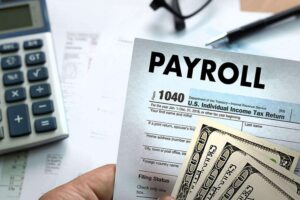
The benefit to the customer is that they do not expend capital until it becomes profitable to them. This means they only purchase it when the end user purchases it from them or until they consume the inventory for their operations. Consignment inventory is the inventory owned by the supplier/producer (generally a wholesaler) but held by a customer (generally a retailer). The customer then purchases the inventory once it has been sold to the end customer or once they consume it (e.g., to produce their own products). Because of the varying time horizons and the possibility of differing costs, using a different system will result in a different value.
- At the top of the income statement is the total amount of money brought in from sales of products or services.
- Reduce the balance on the Inventory object code (C) and increase the Inventory Over/Short object code (D) in the sales operating account to fix a shortage.
- The cost of goods sold is transferred to the operating account through a cost-of-goods-sold transaction.
A business’ financial statements report the combined cost of all items sold as an offset to the proceeds from those sales, producing the net number referred to as gross margin (or gross profit). This is presented in the first part of the results of operations for the period on the income statement. The unsold inventory at period end is an asset to the company and is therefore included on the balance sheet. As inventory is expected to be sold within a year, it is reported on the balance sheet as a current asset. A periodic inventory system, in contrast, updates the inventory balances at the end of the reporting period – that is periodically.
How Are Inventories Reported on Financial Statements?
Remember, having an ultra-low inventory turnover ratio isn’t always practical. Instead, you’ll need to compare your turnover rate to that of your competitors, not businesses in totally different industries. Determining your inventory turnover ratio can help you gauge your inventory risk, especially for spillage and obsolescence.
An exception to this rule becomes relevant if the value of inventory falls below cost. Once again, the conservatism inherent in financial accounting is easily seen. If market value remains greater than cost, no change is made in the reported balance until a sale occurs. In contrast, if the value drops so that inventory is worth less than cost, a loss is recognized immediately. As a note to the June 24, 2009, financial statements for Winn-Dixie Stores states, “Merchandise inventories are stated at the lower-of-cost-or-market” (emphasis added).
Accounting for Managers
Same staples…two different uses showing up in two different places in your financials. On the other hand, if your retail business needs to purchase pricing stickers to put on the new shipment of widgets you just got in, that is an expense. It’s something you do in the normal course of business in order to sell your widgets. Implement receiving and shipping procedures, and restrict inventory supply access. Ensure that everyone who handles accounting entries and inventory control is familiar with stocked goods and objects. Closing
inventory is classified as a current asset since it has a useful life of less
than a year and is a tangible good from which future economic benefits are
expected.
Listed below are just some of the many ratios that investors calculate from information on financial statements and then use to evaluate a company. Accounts payable turnover requires the value for purchases as the numerator. This is indirectly linked to the inventory account, as purchases of raw materials and work-in-progress may be made on credit — thus, the accounts payable account is impacted. The type of accounting system used affects the value of the account on the balance sheet. Periodic inventory systems determine the LIFO, FIFO, or weighted average value at the end of every period, whereas perpetual systems determine the inventory value after every transaction.
Consequently, the reported inventory figure should be reduced if either of these market values is below cost. The average inventory balance across two periods must be known to calculate the turnover ratio and establish the typical number of days needed for inventory what is journal entry and how to work with it turnover. In these computations, the numerator can be either net sales or cost of goods sold. However, the latter is typically preferred because it more accurately reflects the value of the raw materials, works-in-progress, and finished things available for sale.
As it reflects the entity’s financial position, it is also known as a positional statement. To correct an overage, increase (D) the balance on the Inventory object code and reduce (C) the Inventory Over/Short object code in the sales operating account. To correct a shortage, reduce (C) the balance on the Inventory object code and increase (D) the Inventory Over/Short object code in the sales operating account. High-dollar items should be secured with locks separate from the common storage area. Label and store inventory in a manner that allows you to easily access items and determine the quantity on-hand. Separate and note obsolete or damaged products and record waste or damaged products on a waste sheet.
This may happen when a product is released at the right time or when new, improved product versions are available. Decoupling inventory is used when one of the pieces of equipment breaks down, which might cause the entire process to fail. Items maintained in reserve to be processed by a different machine if the first unit cannot provide its expected output are known as decoupling inventory. All units being produced that are only partially finished at any one time make up the work-in-progress inventory.
Deloitte comment letter on tentative agenda decision on costs necessary to sell inventories
Whenever inventory appears to have lost value for any reason, the accountant compares the cost of the item to its market value and the lower figure then appears on the balance sheet. It consists of the goods and materials a business owns, ready to sell or use in production. Inventory can include raw materials, work-in-progress (goods partially through the production cycle), and finished products. A manufacturer’s inventory will be reported in the current assets section of the balance sheet and in the notes to the financial statements. In the current assets section the amount of the manufacturer’s inventory will be positioned after cash and cash equivalents, short-term investments, and receivables. Conducting an accurate physical inventory is a vital component to creating an accurate, consolidated balance sheet at the university level.
The Cost of Goods Sold, frequently shown on a company’s income statement, is calculated using the change in inventory as one of its constituents. Using a different system will produce a different value because of the varied time frames and potential for different costs. Analysts must consider this distinction when assessing businesses with various inventory management systems. Inventory spoilage occurs when a product degrades before a business can sell it.

On the other hand, a sugar-producing facility solely imports sugarcane from various farmers. Bagasse is the name for the leftover material after it has been treated in the factory to extract the juice. Bagasse, juice, and sugarcane will all be used in this process as basic materials. In the revenue statement from the 3-Statement Modeling course at CFI, take note of the “Inventories” item.
Physical Inventory Controls Establishment- Inventory on the Balance Sheet
This means that the closing inventory is indirectly added to the revenue to calculate the net profit. Net realizable value is the difference between the selling price at which the damaged goods can be sold and any costs incurred to sell the good. For example, if the accounting period ends on 31st December, the inventory count is done on 31st December each year.
ITW Reports Second Quarter 2023 Results – Yahoo Finance
ITW Reports Second Quarter 2023 Results.
Posted: Tue, 01 Aug 2023 12:00:00 GMT [source]
Additionally, an inventory balance sheet shows how much cash your company has stashed away on its shelves or in storage when it comes to inventory. Again, inventory is a current asset that is reported on the balance sheet. The change in inventory is used to adjust the amount of purchases in order to report the cost of the goods that were actually sold. If some of the purchases were added to inventory, they are not part of the cost of goods sold.
Understanding Inventory
As a prominent writer in the back office domain, Ryan delivers concise and practical advice, empowering businesses to thrive efficiently. If there are any errors in calculating inventory, there would be cascading effects on COGS, profits, and income. Some instances include breakage during transit, not adding returned goods to inventory, and old goods which might have to be sold at a discount. In all such cases, you need to adjust your inventory to an accurate value.
Raw materials inventory is any material directly attributable to the production of finished goods but on which work has not yet begun. After a physical inventory is completed, record the adjusting entries to the general ledger. Retain an electronic copy of the physical inventory along with the completed physical inventory reconciliations, and keep these copies available for internal and/or external auditors. Inventory obsolescence means your inventory has become dated, which slashes or completely decimates its value.
How to Calculate the Cost of Goods Sold
Inventory is written down when its net realizable value is less than its cost. There are two aspects to writing down inventory, which are the journal entry used to record it, and the disclosure of this information in the financial statements. One way to track the performance of a business is the speed of its inventory turnover. When a business sells inventory at a faster rate than its competitors, it incurs lower holding costs and decreased opportunity costs. As a result, they often outperform, since this helps with the efficiency of its sale of goods.
Stanley Black & Decker Reports 2Q 2023 Results – PR Newswire
Stanley Black & Decker Reports 2Q 2023 Results.
Posted: Tue, 01 Aug 2023 10:00:00 GMT [source]
Inventory devaluation reduces (C) the Inventory object code for the devaluation of goods not sold over time and increases (D) the Cost of Goods Sold object code in the sales operating account. In general, a balance sheet can reveal your company’s financial health by weighing its assets against its liabilities. And by thoroughly analyzing inventory, your team can get a better idea of how liquid your inventory is and how efficiently your business uses or sells it. For accounting purposes, the sales value of inventory is normally defined as its estimated net realizable value. As discussed in the previous chapter, this figure is the amount of cash expected to be derived from an asset. For inventory, net realizable value is the anticipated sales price less any cost required so that the sale will occur.
For example a furniture manufacturer will have lumber and hardware in inventory awaiting its conversion to tables or desks. Regardless of whether the inventory is held by a manufacturer or a re-seller, inventory amounts are reflected on the the Balance Sheet as an asset. Although this brochure discusses each financial statement separately, keep in mind that they are all related.